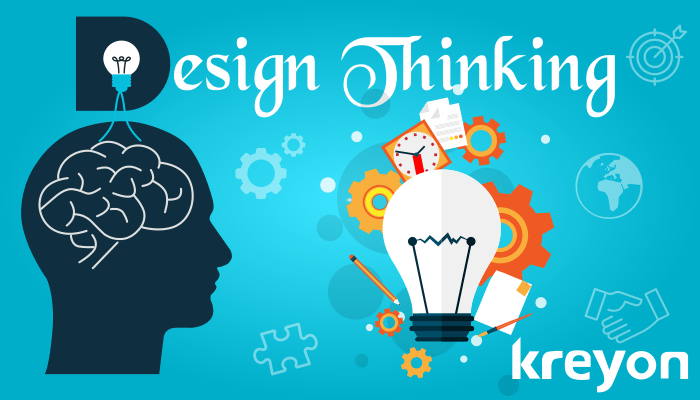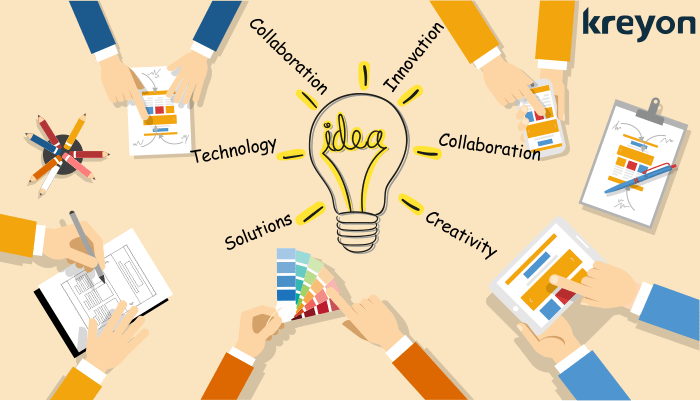Why Businesses are adopting Design Thinking

Design thinking is about connecting the dots to reach the desired outcomes. It is about figuring out the best patterns to understand and offer solutions to users. Innovations, digitisation and great user experience are pushing the Design thinking initiatives across businesses. Google, Apple, Pepsi, & 3M and many others have benefited immensely by adopting design thinking. Here is a look at 10 reasons why businesses are adopting design thinking and benefiting from it:
1. User Centric Products & services:
Design thinking is about empathy with the users of the product/service. The idea is to create designs that resonate with the end users & help them to achieve their desired objectives. The user centric approach helps engineering teams craft their products/services with the end user at the heart of their work. These products and services are created so that they can literally speak to the users.
2. Solutions to complex problems:
Design thinking starts with a solution focus. It is an iterative approach to come up with the best solutions through interactive and dynamic designs. Many teams find it very handy to visualise solutions to complex problems using this approach. Many complex problems require visualisation and creative thinking for coming up with the right solutions. Design thinking help teams to define the problem, the end goal and work towards the solution to achieve the desired objectives.
3. Collaboration, creativity & Innovation:
Creating visual solutions requires different stakeholders to be involved in the process. The end users, the designers & the engineering teams are all involved in working towards the goal. Design thinking offers a new way to look at existing things, promotes creativity & innovation among teams. New ideas are tested; end users are involved to converge to the right solutions. This design thinking video explains how design thinking works.
4. Improvement with every Iteration:
Consumers are exposed to technology innovations around the world. The expectations are high. Design thinking helps companies to evolve and create powerful and intuitive solutions for its users. The idea is to create things for the users, take feedback and continue to improvise the offerings, keeping in touch with latest trends. It helps in creating a better product or service after every iteration to make consumers delighted.
5. Enhance time to market:
At every stage of the product/service design, there is a prototype that is shared with all the stakeholders to take instant feedback. The emphasis is on communicating ideas quickly and intuitively. The visual depiction helps the teams to present and share these ideas, which ensures that everyone understands things reasonably clearly. The time for development and launching products & services in the market is significantly reduced because everyone is on the same page.
6. Differentiation of products:
Today the consumers are having more options than one can count. Every company is trying to woo its users. Apple has been an epitome of success with its design thinking approach. They successfully differentiated their products with superior design and amazing user experience. Design thinking is essentially focusing on the users, their experience in using the products and working towards improving it.
7. Align Users, Business & Technology:
A successful product or services solves the day to day problems of its consumers. The understanding of how the users interact with the product or service is essential element of design thinking. It not only evaluates the needs of the users but also maps the business viability of the products and technology roadmap to achieve the end goals. Design thinking helps to interconnect users, business and technology.
8. Risk Management:
Design thinking eliminates and minimises the chances of failure for a product or service. Early interactions with users, feedback from all stakeholders and iterative approach towards development mitigates risks for the adoption of the product or service. When design thinking is employed, many underlying and hidden problems that are hard to see can be visualised early and circumvented.
9. Improved Focus:
The Deloitte study shows that Americans look at their smart phones in the aggregate more than 8 billion times daily. Today users have to deal with flood of emails, messages, apps and other distractions. Teams find it hard to stay focused in the era of distractions today. Design thinking reinforces the most important aspects by simple workflow management, prioritising key tasks and reorganising work more efficiently. It promotes a work culture where everyone can accomplish more by improved focus.
10. Visualisation of the Big Picture:
Design thinking helps companies to not only assimilate information, but more importantly look at important patterns. It helps them to uncover questions that define the problems and create a strategic roadmap for achieving the desired outcomes. The big picture helps organisations to evaluate the questions & creates visual representation of the information to answer some of the questions below:
1. Who is involved?
2. What is the desired outcome?
3. How many users are involved?
4. Where is the need?
5. When is this needed?
6. How is it going to be accomplished?
7. Why are we doing this?
Design thinking helps businesses to define the problem, create a strategy and the roadmap for the solving them. Vast information can be summarised quickly with designs. Visualisation can represent the key information, users, feasibility, constraints and desired outcomes for businesses.
Corporates around the world are now looking at design thinking approach to solve problems, innovate and connect with their customers. Design thinking is creative resolution of problems by expressing ideas visually and looking at patterns. Design thinking is a creative approach to problem solving that companies can use to solve day to day problems. It is also helping businesses to create compelling solutions for their users that evoke positive emotional response & make their brand stronger.
Kreyon Systems is a leading multinational software company in Jabalpur serving USA, UK, Middle East, Europe & Africa. Kreyon is focused on building great design thinking software development. Please get in touch with us for any assistance or queries.

